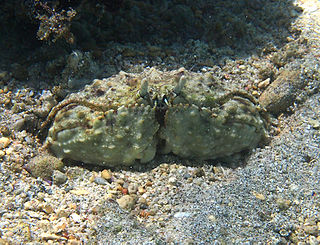
The Tasmanian devil is a carnivorous marsupial of the family Dasyuridae. It was formerly present across mainland Australia, but became extinct there around 3,500 years ago. The size of a small dog, the Tasmanian devil became the largest carnivorous marsupial in the world following the extinction of the thylacine in 1936. It is related to quolls, and distantly related to the thylacine. It is characterised by its stocky and muscular build, black fur, pungent odour, extremely loud and disturbing screech, keen sense of smell, and ferocity when feeding. The Tasmanian devil's large head and neck allow it to generate among the strongest bites per unit body mass of any extant predatory land mammal. It hunts prey and scavenges on carrion.
Prithvi Nath Dhar was an Indian economist and the head of Indira Gandhi's secretariat and one of her closest advisers.
Tyndale University is a Canadian private interdenominational evangelical Christian university in Toronto, Ontario, which offers undergraduate and graduate programs. Tyndale students come from over 40 different Christian denominations.

Calappa is a genus of crabs known commonly as box crabs or shame-faced crabs. The name box crab comes from their distinctly bulky carapace, and the name shame-faced is from anthropomorphising the way the crab's chelae (claws) fold up and cover its face, as if it were hiding its face in shame.

Ripogonum is a genus of flowering plants confined to eastern Australia, New Zealand, and New Guinea. Until recently this genus was included in the family Smilacaceae, and earlier in the family Liliaceae, but it has now been separated as its own family Ripogonaceae.

Cecil Earle Tyndale-Biscoe was a British missionary and educationist, who worked in Kashmir where he established the Tyndale Biscoe School. He was born with the family name Biscoe. It was changed to Tyndale-Biscoe in 1883. The family name was Tyndale, Cecil's father inherited Holton Park and changed his name to Biscoe. Later on, the family changed their name to Tyndale-Biscoe. My grandfather, the youngest of the family was Christened Tyndale as a Christian name, and later after the deed poll change he had Tyndale twice in his full name. His contribution will be remembered

Tyndale Biscoe School is a school in the Sheikh Bagh neighbourhood, in the Lal Chowk area of Srinagar, Jammu and Kashmir, India. The school was founded in 1880 CE and is one of the oldest schools in Jammu and Kashmir, the oldest being S.P school which was founded in 1874 CE. The school was started by Christian missionaries and was named after Canon Cecil Tyndale-Biscoe (1863–1949). It still has affiliations with the Church Mission Society. The first principal was Reverend J.H.Knowles.

The Clarke Medal is awarded by the Royal Society of New South Wales, the oldest learned society in Australia and the Southern Hemisphere, for distinguished work in the Natural sciences.
Rear Admiral Alec Julian Tyndale-Biscoe CB, OBE was a British naval engineer and a senior officer in the Royal Navy, who played a leading role in the design of HMS Vanguard, the biggest- and last- battleship to be built for the Royal Navy.

Orithyia sinica, sometimes called tiger crab or the tiger face crab, is a "singularly unusual" species of crab, whose characteristics warrant its separation into a separate genus, family and even superfamily, having previously been included in the Dorippoidea or Leucosioidea. Its larvae, for instance, are unlike those of any other crab.

Mursia is a genus of crabs in the family Calappidae, containing the following species:
The Murgon fossil site is a paleontological site of early Eocene age in south-eastern Queensland, Australia. It lies near the town of Murgon, some 270 km north-west of Brisbane. The Murgon site is important as the only site on the continent with a diverse range of vertebrate fossils dating from the early Paleogene Period, making it a crucial period in mammal evolution. It is also important in demonstrating Australia's Gondwanan links with South America in the form of similar fossils from the two continents.

Leucosiidae is a family of crabs containing three subfamilies and a number of genera incertae sedis:
Leucisca is a genus of crabs in the family Leucosiidae. The genus is endemic to South Africa.

Leucosia is a genus of crabs in the family Leucosiidae, containing the following extant species:

Myra fugax is a species of crabs in the family Leucosiidae.
Ixa is a genus of Indo-Pacific pebble crabs from the family Leucosiidae. The genus was erected by William Elford Leach in 1816. One species, the Red Sea pebble crab, is a Lessepsian migrant and the species was first described to science from specimens collected on the Mediterranean Sea although the species is native to the Red Sea and had colonised the eastern Mediterranean through the Suez Canal.

Onitis alexis, the bronze dung beetle, is a species of dung beetle in the family Scarabaeidae. It is endemic to Africa, Syria, Spain, Tunisia and Greece. It was introduced into Australia and is established in the warmer regions of northern Australia. The species is found in Oceania.
Coleusia signata is a species of crab from the family Leucosiidae which is found in the Red Sea and the western Indian Ocean and which has colonised the eastern Mediterranean Sea by Lessepsian migration through the Suez Canal.

Nilnag is a freshwater lake 5 km (3.1 mi) away from Yousmarg in Budgam district of Jammu and Kashmir, India. It is around 47 km (29 mi) away from Srinagar, the summer capital of the union territory. The lake is famous for its turquoise water. The route from Yousmarg is rather difficult and unmotorable and goes through a dense forest. The lake's crystal-clear blue water gave it its name: nag stands for lake and nil for the blue colour. The location is a great for picnic spot.












